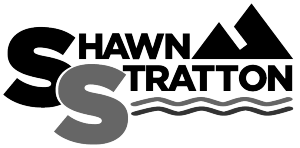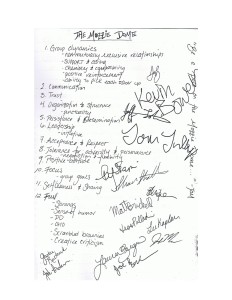In 1965, psychologist Bruce Tuckman developed his now popular theory on the stages of group development. The original phases were Forming, Storming, Norming, and Performing. Around 1975, he added another stage to the theory, the final stage which he called Adjourning.
You can find Tuckman’s original article “Developmental Sequence in Small Groups.” here and a nice summary of the stages on the businessballs.com site here.
This article addresses what I believe is the most challenging stage: Storming. The storming phase comes second in the stages after the initial Norming phase. In Storming, team members have gotten to know each other adequately and have established some baseline norms for the group.
They are no longer trying to just “fit in” they are now trying to establish them selves within the group by expressing opinions and challenging others opinions. Members are now confortable to express dissatisfaction and push the edges of the team standards laid out in the norming phase. Storming may even be directed to the team leader when individual roles have not been clarified or developed into what they expected.
Growing Pains
I remember as a teenager just about every ache and pain I had, that was not directly from a bruise from my chosen sport of the day, was attributed to “growing pains”. The Storming stage is the growing pain phase of group development. No one likes it but it is essential part of growth.
Unlike the teenage growing pains, there is no ibuprofen (what we call ‘I Be Broken’ on expeditions) pill to take for alleviating the pain and stress of the phase. This is where the leader must step in and closely manage the team. I don’t mean they need to come in and stop every bit of storming but they do need to carefully manage the team pass through the phase.
One of the greatest challenges for a leader at this stage is to have patience in letting the storming take place but the authority to step in if the storming escalates become destructive to the group. Out of control storming can put the brakes on any group development, whereas healthy storming can be a powerful experience that greatly strengthens a team.
Here are 5 tips leaders can use to successfully navigate their teams through the Storming phase of group development.
1. Develop Communication Skills
Most conflicts turn unproductive because of poor communication skills. One of the greatest gifts a leader can give their team is training in communication skills, especially conflict resolution. Without proper communication, training people often attack, accuse, become defensive, and shut down during a conflict, leading to hurt feelings, diminished confidence and low team morale.
2. Let Them Storm
Storming can be a painful but productive time for a team. A leader’s role is not to step in like a parent every time their kids fight but to closely monitor the immerging conflicts with the anticipation they will work themselves out in a productive manner. Increased individual and group pride, confidence and respect are often the result of productive storming. Only step in if the conflict is becoming unproductive and destructive to the team or individual.
3. Do One-On-One Check-Ins
Regular individual check-ins are always encouraged, especially during the Storming phase. There is no better way to gain the pulse of the group than through these meetings. People will generally disclose more information, giving you an opportunity to address individual concerns and offer coaching on pressing issues.
4. Review Established Norms
Assuming you have an established list of group values or norms to live by (if not check out my Team Recipe), the storming phase can be a great time to break them out and review them. But don’t just review them, get every team member to evaluate with a letter grade or a # out of 10, how they feel the team is doing living up to the list. When things get testy in the group, this can be a nice wakeup call and a chance for everyone to see how they can make a more positive contribution to the team.
5. Ask To Alter Behaviors Not Personalities
In this phase, there may come a point that you feel it is necessary to step in to prevent the complete destruction of the group. In this case, it is imperative you focus on behavior changes that are needed to reestablish a positive team atmosphere. Often people want to ‘fix’ other’s personalities when they actually mean behaviors. We can’t ask people to change their personality, as it has been developing since their early teenage years but we can ask people to alter their behavior as they are having a negative effect on the team.
The next time your team is experiencing the storming phase, before you jump in to defuse any conflict, take a step back and evaluate the situation. Ponder these 5 tips and decide your next course of action.
Have you been through the Storming phase recently? Leave a comment below and tell us how you moved your team through the challenging time.





